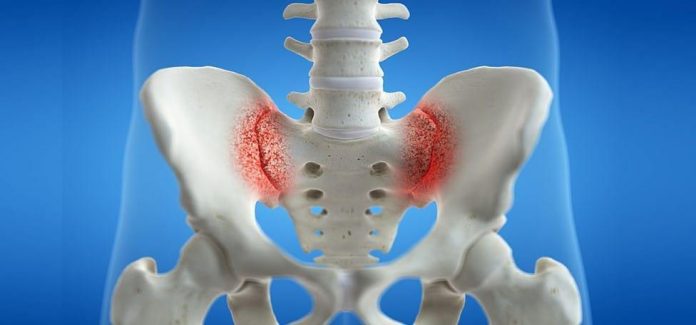Estimated reading time: 0 minutes
Sacroiliitis is a sacroiliac (SI) joint inflammation associated with inflammatory arthritis of the spine.
What is the difference between sacroiliitis and arthritis?
Sacroiliitis is the inflammation of the SI joint, which is located on each side of the sacrum (lower spine) and connects the base of the spine to the hip bone.
Trauma, illness, pregnancy, or arthritis can all cause inflammation of the SI joint.
Sacroiliitis frequently causes a dull, throbbing pain in the lower back, buttocks, and legs that worsens with prolonged sitting and/or activities that involve bending or twisting at the hip.
Arthritis is a collection of conditions that cause joint inflammation and damage.
The bulk of these diseases are classed as either degenerative (such as osteoarthritis) or inflammatory (such as rheumatoid arthritis).
Most types of arthritis involve dull, persistent pain with a gradual or insidious start, as well as joint stiffness and swelling.Arthritis is a collection of conditions that cause joint inflammation and damage.
Is arthritis caused by sacroiliitis?
Inflammatory arthritis of the spine, such as ankylosing spondylitis, psoriatic arthritis, and rheumatoid arthritis, are usually accompanied with sacroiliitis. In some cases, sacroiliitis is thought to be an indication of underlying arthritis.
Sacroiliitis, on the other hand, can occur on its own without being connected with another type of arthritis.
Some of the most prevalent non-arthritic causes of sacroiliitis include:
Trauma on a grand scale. A fall or accident that causes pelvic or lower back trauma might result in sacroiliitis.
Trauma on a small scale. Sacroiliac ligament micro-injuries can occur as a result of variations in how a person bends and mechanically navigates their environment.
Overuse. Repetitive lower back and pelvic activities, such as long-distance running or cycling, as well as manual employment involving repetitive twisting, can exert strain on the SI joints.
Pregnancy. Because of the increased weight and pressure on the pelvis during pregnancy, the sacroiliac joint can become strained or inflamed, resulting in pain.
Gait abnormalities. Walking or standing irregularities may place additional tension on the SI joint(s) and cause inflammation. Long strides in a gait cycle may irritate the sacroiliac joint. The most common cause of gait issues is a difference in leg length.
Infection. In rare cases, sacroiliitis can be caused by a bacterial or viral infection.
Prolonged SI joint inflammation can cause joint damage over time, increasing the risk of developing arthritis.
It’s important to realise that not all cases of sacroiliitis proceed to arthritis, and that the evolution of arthritis differs from person to person. Early sacroiliitis detection and treatment can help avoid or slow the progression of arthritis.
If you are having symptoms of sacroiliitis or arthritis, you should see a doctor who specialises in diagnosing and treating musculoskeletal discomfort. This will allow you to determine the underlying cause of your problems and build a treatment plan that is tailored to your needs.
Related-
Know more about Ayurvedic Spinal Disk & Radiculopathy Treatments.
GET IN TOUCH


Recent comments